The ultimate guide to lead management in CRM. Everything you need to know from qualification to starting the sale.
Lead management prevents lead leakage, makes sales efficient, and helps close more deals. Let’s see how and the role of CRM in it.

Lead management is the essence of a good sales funnel. If your leads are not well qualified with the right process and people, you’re wasting your sales team’s time and risk losing leads and customers.
What is lead management?
Lead management is the process of acquiring, nurturing, and following up with leads till they become your paying customers. This concept is more relevant in B2B and digital businesses. Once you have a lead list either incoming or acquired with outreach, there needs to be constant engagement with leads about your product and services to guide them towards becoming a customer.
Why is managing your leads important?
An important part of lead management is measuring the efforts of your team. For example, how many prospects were engaged and how many converted. This brings us to a point—if you cannot measure you cannot manage. When all the lead management efforts are measured, they get managed properly.
What’s more? According to a DemandGen Report, “Nurtured leads produce a 20% increase in sales opportunities versus other leads”. It just goes to show that leads are people and striking a conversation with them can be the difference between them staying a lead or becoming a happy customer.
Lead flow
Now let’s briefly introduce the different stages in a lead flow/funnel. It starts with a lead who is a person interested in what you’re selling. They become an opportunity when their requirements are clear at which point the sales team sends them a quotation describing the services offered in exchange for money. When they accept it and pay your sales invoice, this is a conversion that makes them a paying customer. Different roles from the sales team engage leads in different stages of the funnel.
Here is a diagram showing the lead to customer flow:
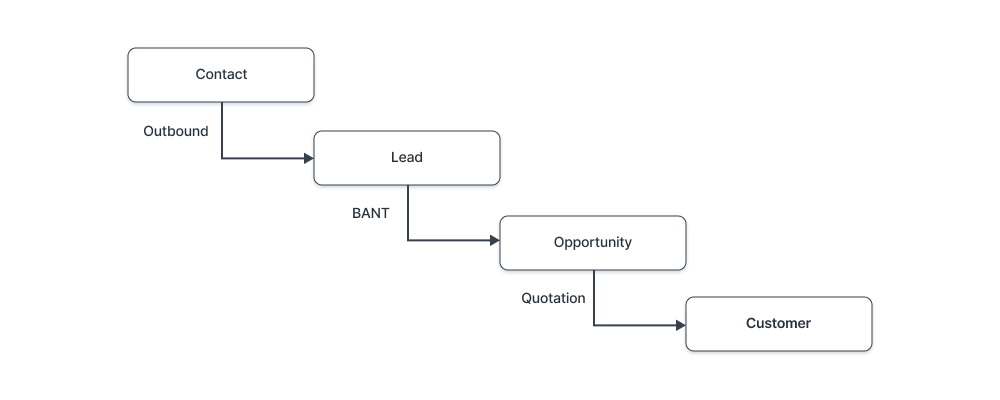
Stages in lead qualification
Now let’s dive into topics closer to lead management and see the differnet stages in lead qualification.
Marketing qualified leads
There is the first pool of leads that come to your website and take an action. The action could be filling out a form, starting a trial, requesting information, signing up for something, or downloading any resources. This pool of leads is generated by marketing activities like blogs, campaigns, ads, etc.
Discovery call/BANT
From the pool of MQLs, serious prospects are found via discovery calls. Dedicated team members called sales development representatives (SDRs) initiate conversations and qualify leads using a framework called BANT. We’ll talk about BANT soon.
The important thing to note here is that both inbound and outbound leads need to be qualified. Prequalification serves the purpose of running a fine-tooth comb through your leads to discard any nonbuyers. This allows only serious buyers to move ahead and engage with dedicated salespeople. If your business offers a free trial, there will be a lot of leads casually exploring and may not be in the mood to buy right away.
In fact, according to Gleanster Research, “Only 25% of leads are legitimate and should advance to sales”. Hence, pre-qualification is a vital first step in lead management to make the best use of a salesperson’s time.
Sales accepted leads (SAL) / sales qualified leads (SQL)
Once the leads enter the sales cycle and pre-qualified, they become sales accepted leads (SAL), i.e., accepted by the sales team and qualified for a sales conversation. These are prospects that are clear about their requirements and are also called an opportunity or SQLs. SALs/SQLs engage with dedicated salespeople for specific conversations around the product. At this point, the salesperson works to find a match between the lead’s requirements and your company’s product/service. After this stage, the leads become your customers when they pay the invoices you send.
Inbound vs outbound leads
There are two major areas from where leads come in your funnel—inbound and outbound. Let’s understand what they are:
- Inbound leads: Leads that come into your funnel on their own due to marketing efforts are inbound leads. The sources can be blogs, email, eBooks, social media, word of mouth, etc.
- Outbound leads: These are the leads that come into the funnel with active efforts from the sales or marketing teams. This includes scouting LinkedIn, cold emails, cold calling, etc.
Usually, companies go for outbound only when their inbound process is stable.
Is your lead ready? Identify with BANT
It was good to know about prequalification and sales qualified leads but you must have had questions like “How to qualify sales leads?” and “Who does it?” Well, let’s answer the first question in this section. In the sales cycle, leads are qualified with a framework known as ‘BANT’ which stands for budget, authority, need, and timeline.
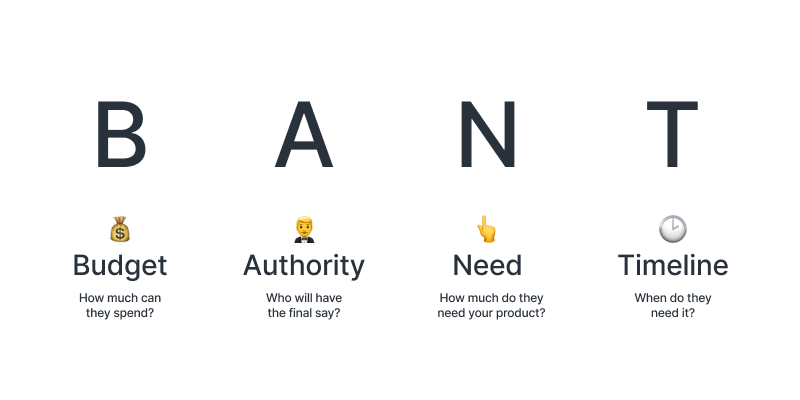
Budget
How much budget does your lead have to spend on your solution? The budget doesn’t only mean a one-time spend, in case of subscriptions or other B2B areas, there are factors like annual maintenance charges, etc. Understanding your lead’s budget is the first step in understanding the readiness for entering the sales stage.
Authority
The next step is identifying the authority of the person you’re engaging with. If it’s the founder or senior person then great, he/she is most likely the decision-maker. But more often, it’s the mid-level employees that are in conversation with you. So your job is to identify who you’re talking to and who makes the final call to make the transaction.
Need
Leads lookout for products/solutions in the market when there’s a need to solve a problem. They may or may not have already done something to address that need and may have different priorities. With lead management, your job is to identify the lead’s needs.
Timeline
Finally, you should ask the timeline in which they seek to solve their problem. For consumer-facing products, these can be days or weeks and for B2B products, timelines of weeks and months are common. Understanding the timeline helps your team know when to approach the conversation at what pace.
Who manages leads?
From scouting to qualifying to closing the deal, there are different people with different roles that engage leads in the funnel. Every role is responsible for a different stage of engagement.
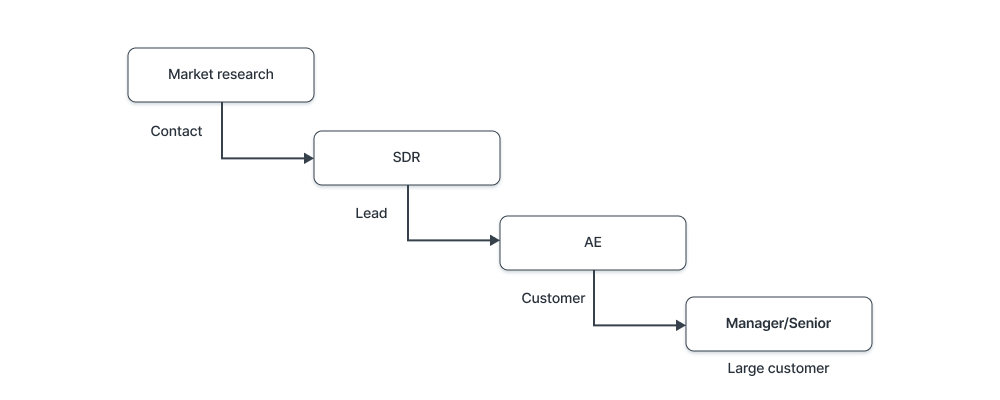
Market research team
If your organization does outbound, there’s a market research team that does all the scouting and collects basic information like name, email, LinkedIn profile, etc. This creates a pool of potential leads that the next role in the funnel can approach.
Sales development representatives (SDRs)
From the pool of leads, the SDRs engage in conversations and pre-qualify the leads using BANT. They play an important role in the whole cycle by running a comb through the leads and making the AE’s work efficient.
Account executives (AEs)
This is the final stage in most conversations where the product/service to be purchased and pricing is finalized. It’s also the stage where there’s a high chance of leads dropping off due to price sensitivity, finding an alternate solution, or any other reason. However, aggressive AEs have a high chance of closing the deal since they follow up and actively engage with the leads by trying to understand and address their concerns.
Managers/senior leadership
While managers and senior leaders don’t usually work on leads, they might be included in conversations with large prospects that have huge revenue potential for your business. Many times the key decision-makers in B2B businesses are department heads/vice presidents and they expect a senior sales representative to engage them.
8 ways for managing leads
Now let’s get down to the specifics and talk about the different ways in which leads are managed. Think of this section as methods or best practices for lead manangment.
1. Filtering leads or presales
Presales or prequalification activities may be overlooked when you’re starting out but they’re important to efficiently use a salesperson’s time. There may be tens, hundreds, or thousands of business inquiries every day. If dedicated salespeople engage all of them, it’s a bad use of their time. Salespeople are good at selling and that should be their focus. Hence, setting up a prequalification process where trash leads are filtered and requirements are understood is an important first step in lead management.
2. Clearly define lead ownership
If you have a team of say 10 SDRs and different regions from where leads are incoming, different market segments, different products, and no clear ownership/assignments it’s easy for people to get confused. Such confusions waste time in multiple ways like double replies, spending time on figuring out who should continue the conversation, not to mention frustration on the lead’s end. Setting clear assignment rules eliminates such confusion and additionally, having a supervisor is good for resolving conflicts/confusions in lead management.
3. Nurturing and communicating with leads
By not engaging leads actively, they become passive and leak away from your funnel. Having a constant stream of communication to engage them, understanding their needs, doing BANT analysis, pointing them in the right direction are all part of communication that will keep the leads engaged. Depending on your business, this can be automated via drip emails or you may need real people to send personalized emails.
4. Following up on prospects
Let’s face it. Most people who sign up or visit your website aren’t buyers. Contacting them every day is spam but you also can’t let them sit idle. A healthy interval for follow-ups is anywhere between 2-7 days.
5. Take notes
After every contact is it email or phone, there should be a record of what was discussed and the next steps to take. Doing it in the lead form itself (in a CRM software) is ideal. This serves as a reference for the SDR as well as anyone else browsing through.
6. Have alternate contacts
In B2B when dealing with other companies, the person on the other end may change. This may happen naturally as the conversation moves towards closing the sale. But is especially true for large organizations, your main point of contact leaves the company mid-conversation and now you’re left with nothing. So having an alternate person’s contact on record is a good practice.
7. Lead scoring
Among the hundreds or thousands of leads, how would you know which leads are good and which ones are bad? More importantly, where are the good/bad leads coming from? The answer is lead scoring. By having the SDRs rate the leads and storing information about lead source, you can determine which channels are working well and which ones need improvement. Some tools even automate lead scoring.
8. Maintaining cadence
A good lead management system should ensure that every lead gets equal treatment. Around 12-14 touchpoints (contacts) in 30 days is nice. The contacts can be personal or emails but the point is to avoid lead leakage. Having a good cadence creates discipline in the sales team. Ideally, such efforts should result to having 0 leads where the contact cadence is overdue, i.e., leads are slipping away.
Is your lead hot or cold?
You must’ve heard of the words hold and cold being used to describe leads. They’re used to identify the stage a lead is in currently. A hot lead is someone who is actively engaged in conversation and moving towards conversion and a cold lead is someone who is unresponsive even after multiple contacts.
The sales team’s efforts are about getting the cold out of cold leads with targeted emails or phone calls. This is especially true in outbound.
How to warm up cold leads
People may not respond due to multiple reasons. Your email is getting buried in their inbox, your subject line does not catch their attention or looks spammy, they don’t have time, or they simply don’t want anything to do with whatever you’re selling.
In case of cold calls, usually, prospects don’t entertain them because let’s face it, everyone hates a cold call from an unknown salesperson. So here again, you should be able to get the cold out of the cold call. A good way to get them interested is to request a short 60-sec call first and then ask them to decide whether they want to continue the conversation.
When to stop following up
There are only so many times you can engage a lead till it starts to feel like spam or even harassment. Not to mention, you only have so much time and there are other leads too. But when do you know it’s time to stop pursuing? The answer is—when you get a hard no from multiple people at the client’s end. Assume you started a conversation with a department head and they said no, approach the manager, approach the VP, approach whoever would engage you. If you get NOs from all of them, then you know there’s no chance here and you mark the lead as lost.
Assume that T is your target persona, you can do your approach like T, T-1, T+1:

That is people above and below the target persona.
Lead generation and acquisition
We’ll only briefly touch on these topics since they’re related but not the focus of this article. They sound similar but are different concepts.
Generating leads
Attracting leads into your buying process through landing pages, PPC/ads, newsletters, or other media forms is known as lead generation.
Acquiring leads
Once the leads are in your funnel and have taken an action, the leads have been acquired. For example, adding an item to a cart, starting a free trial, asking for a quote, etc. Companies also acquire ready to buy leads from a third party.
Using CRM software for lead management
A decent lead management system / CRM software will have all the basic features you need to handle assignments, store all relevant information, notifications for follow-ups, and more. Let’s see some of these features in ERPNext.
Lead source
By default, there are a few lead sources available to choose from. For outbound or other offline sources, you can fill the source manually or create a script for certain sources. The lead source can be filled by the lead when using a web form and it’ll show up in your leads. From here, you can filter and analyze where your leads are coming from.
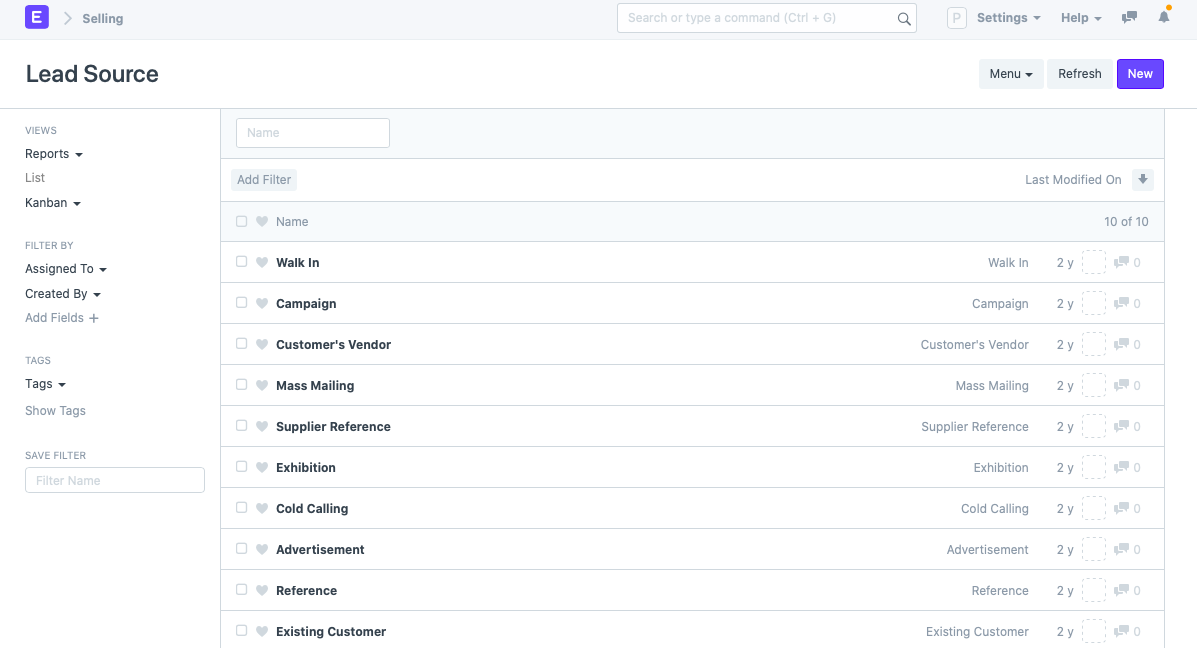
Contact
Depending on whether you’re doing inbound or outbound leads, you’ll create the contact before or after the lead. Either way, the contact of a person records all personal information like full name, phone number, email address, designation, address, company, etc. Adding more info like social media or other contact info is easy by using ERPNext customization.
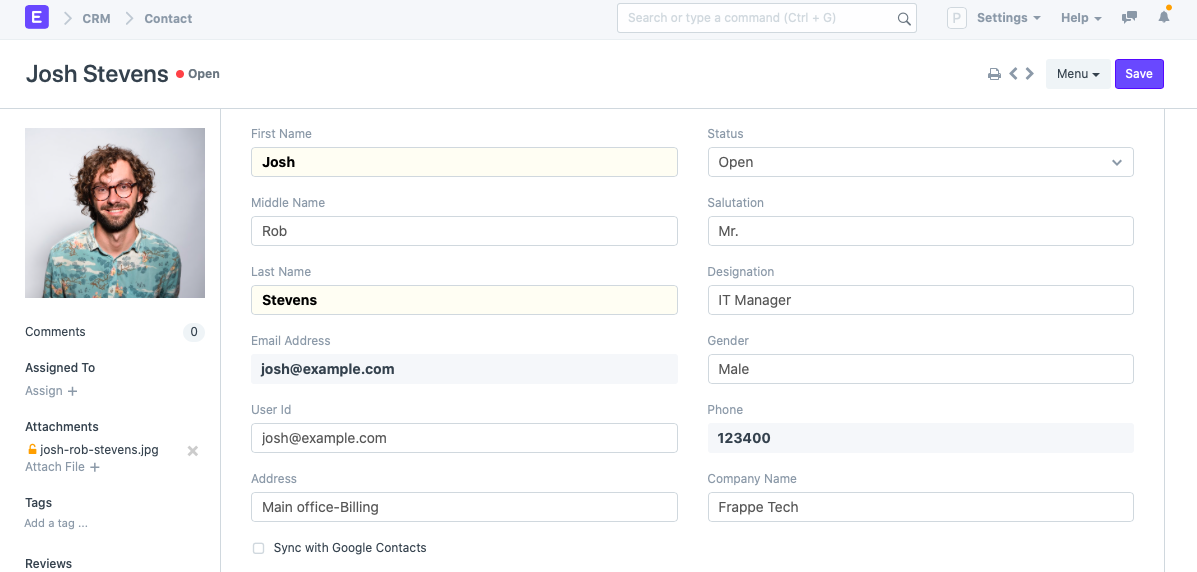
Booking appointments
Setting up a call with your leads to understand their requirements is one of the most effective things to do. However, time is wasted in back and forth communication to set a time. You can use an appointment booking to show the leads your availability and let them pick a time.
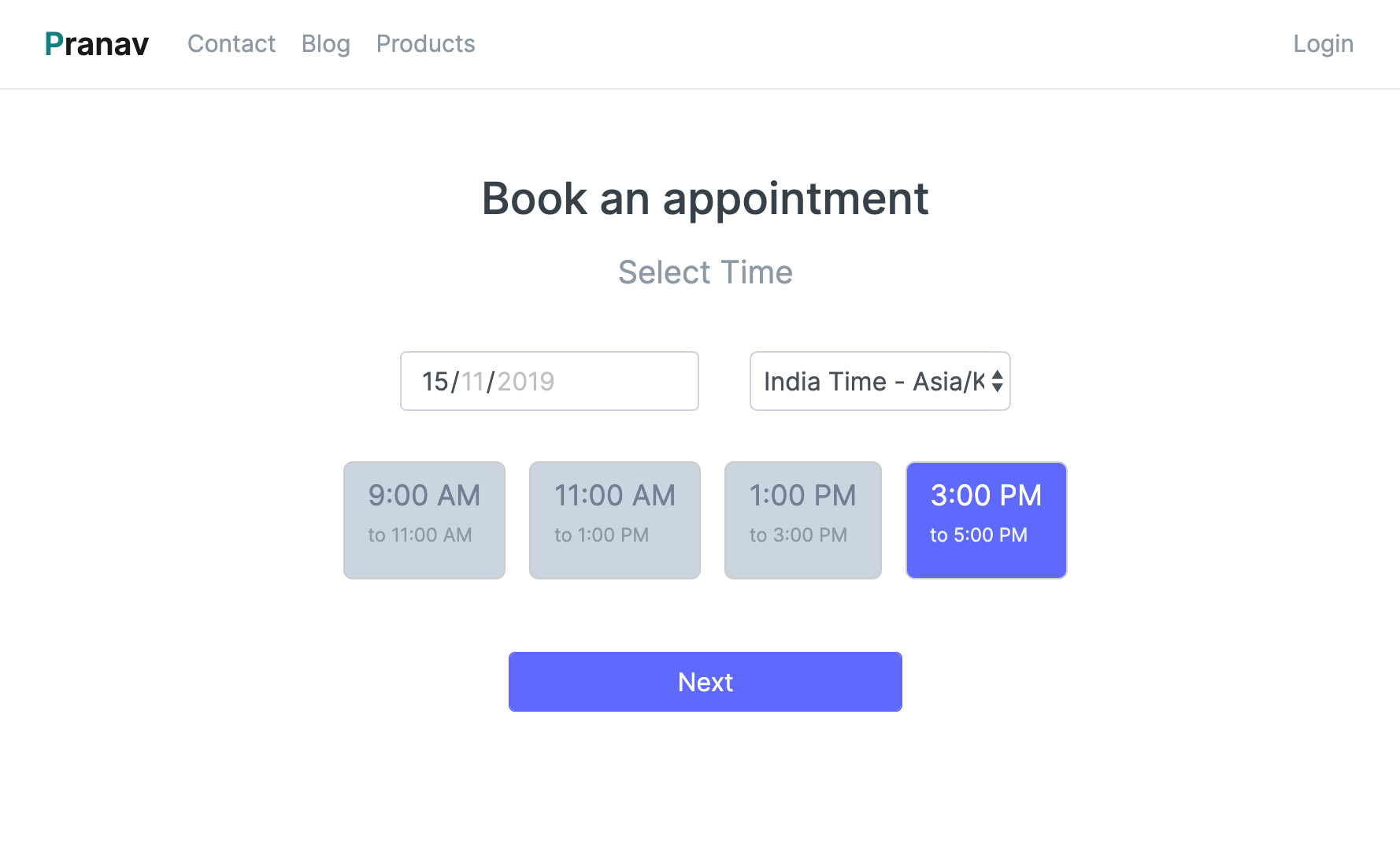
Notes
Taking notes during and after a call defines actionable and gives you a clear picture when you revisit the lead. It also gives quick pointers to someone else like your supervisor. You can do this in the Notes form or add comments within leads in ERPNext.
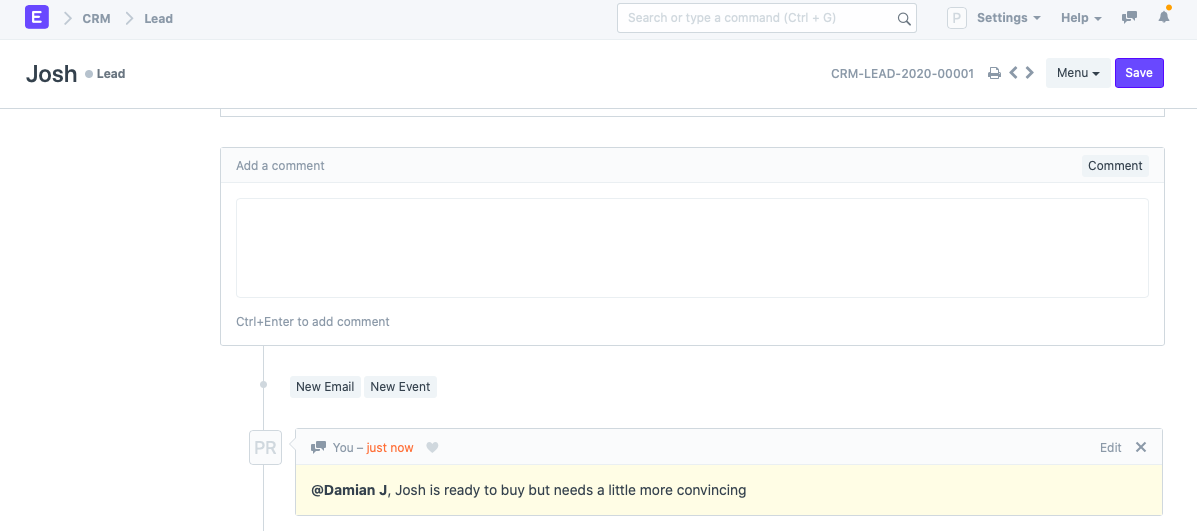
Followup notifications
Between tens or hundreds of leads, one SDR can get completely lost and forget about leads. Setting up notifications and follow-up dates ensures that this doesn’t happen by giving timely reminders.
Lead auto-assignment
You may have leads from different locations, market segments, products, or any other differentiating factors. How to ensure that the right person gets the lead without going through them? By using auto-assignment rules, you can automatically assign leads to SDRs based on different criteria. You can control parameters like assign, unassign, and close conditions, Round Robin vs load balancing, days of the week, etc.
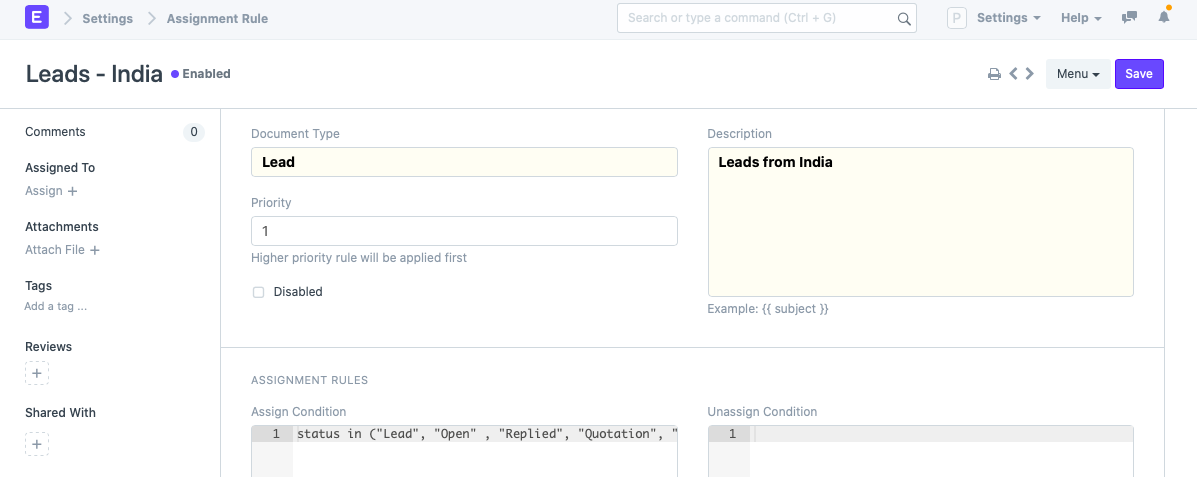
Reports
Use different reports to get insights on lead data. All lead details in a table with the Lead Details report:
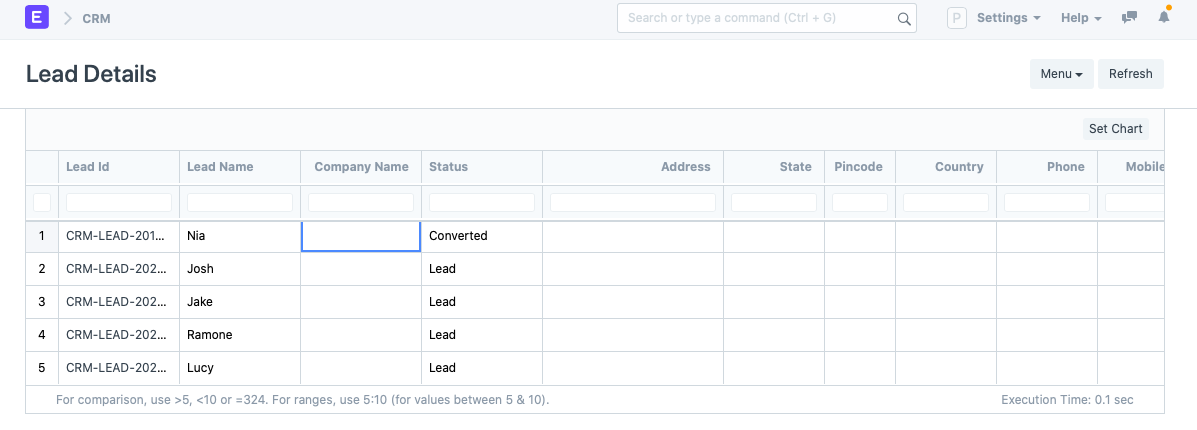
There are various reports for identifying leads that have engaged but not converted, lead owner efficiency, etc.
Conclusion
There you have it, everything you need to know about lead management explained in simple words. We saw various roles, stages, techniques, and frameworks. In the end, bad lead management or worse, no lead management makes you lose out on potential sales.
Prasad Ramesh
Marketing at Frappe.
@Robert, thanks and I've reached out to you via email to understand this better.
@Chirag, @Federico, and @Alaa, thanks!
Nice article...BUT...
Quote "Inbound leads: Leads that come into your funnel on their own due to marketing efforts are inbound leads. The sources can be blogs, email, eBooks, social media, word of mouth, etc."
I guess the companies website by (Google/Bing..) search is for many companies the main inbound lead source. One can easily build nice websites using ErpNext. Unfortunately, the portal and shop seem to be low on the priority list of Frappe. This performs badly and chases away customers.
Great article. Thanks indeed. Your description is well understood and easy for new people.
Excelente men! Super cool your articles!
Informative yet simple to understand. Keep bringing us the content.
@Rajesh, thanks! Glad that you love our content.
Amazing content. I always love the way erpnext describes the concept.